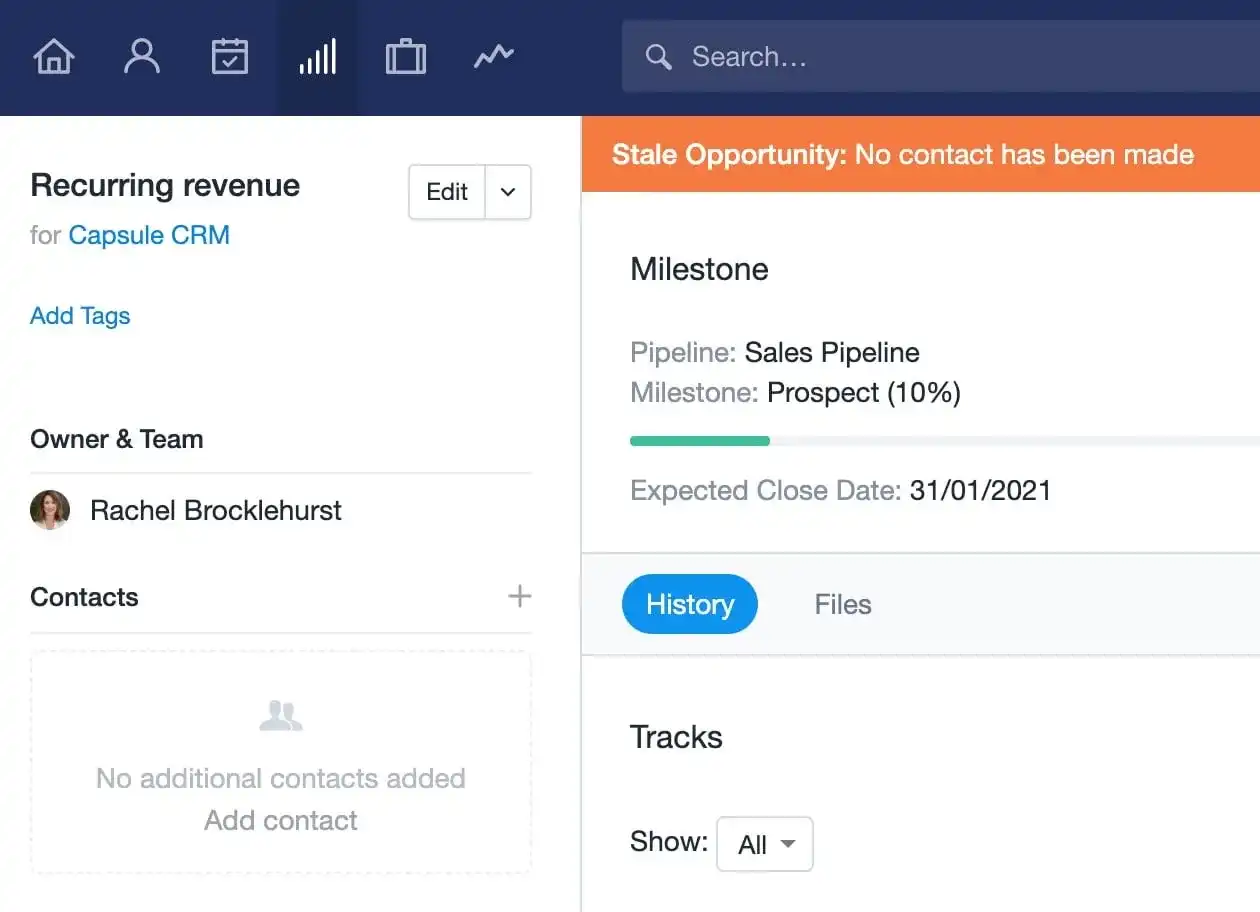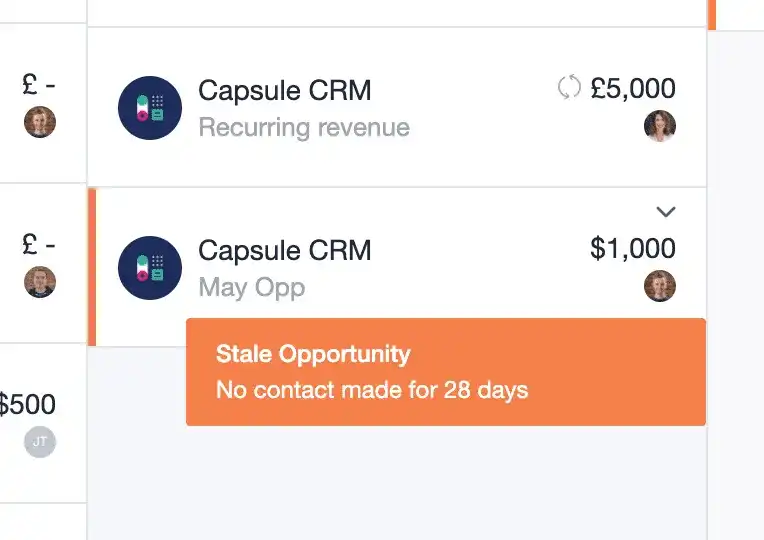When most businesses first start, they focus all their efforts on one product or service, putting everything they’ve got into making it the best possible solution in that market.
However, as a business grows, relying on a single product or service for revenue can leave it vulnerable to economic changes and shifting consumer preferences. Diversifying your revenue streams can help safeguard your business by introducing new channels for growth and stability.
In this article, we’ll examine some practical strategies for exploring new revenue streams. We’ll also look at how you can set up your sales pipeline to effectively track different sources of revenue and optimize sales.
The importance of diversifying revenue streams
Revenue diversification means expanding your business’s income sources by introducing new products and services. This can also include entering new markets with your existing solutions. Diversifying your revenue improves your business’s resilience; by not relying on a single revenue stream, businesses create a buffer against market volatility, industry shifts and economic downturns.
For example, the COVID-19 pandemic was a black swan event that forced many businesses (especially those in the travel or hospitality industry) to pivot and find new ways to generate revenue. Events like Brexit and the introduction of GDPR meant that businesses operating in Europe had to review their processes and, in some cases, explore new markets.
Exploring new revenue streams isn’t just about safeguarding against risks and unexpected changes though; it can also be a way to explore new opportunities and grow your business. Companies like Microsoft and Apple have famously gone from their original products to offering a diverse range of solutions in different sectors.
Not all of these new products have been successful (does anyone still actually have a Microsoft Zune?), but when you have multiple revenue streams they don’t all have to be winners. Like a good investor with a diverse portfolio, just one positive result can sometimes be enough to cover any poor performers.
As you explore new revenue streams, tailoring your sales pipeline ensures your team uses the best approach for each scenario. Managing multiple, customized sales pipelines can feel complex at first but, with the right setup, you can track each stream and ensure they’re operating effectively.
Key strategies for finding new revenue streams
Most businesses would agree that additional revenue sources are useful, but it can be tricky to know where to start — especially when you’ve invested so much time and effort in your original offer. The following strategies will help you find new possibilities that work for you and your customers.
Identifying new market opportunities
No business occurs in a vacuum. If you’re spending too much time looking inward, you might miss the next great opportunity that’ll take your business to the next level. Regularly take time to analyze the latest market trends, customer behaviors and emerging needs.
One of the best ways to research your market is to speak with your customers. Surveys are ideal for getting a high-level view of customer pain points and objectives, but don’t overlook actually sitting down and having a conversation. It may be more time-consuming, but talking one-on-one allows you to dig much deeper and uncover gaps in the market, changing preferences and areas underserved by your competitors.
Your team’s expertise and creativity, coupled with these direct insights from customers, can lead to breakthrough innovations. Encourage a culture of experimentation and openness to explore new ideas to continually refresh your products and services in line with market opportunities. By developing new solutions that address the specific needs of emerging markets or refining existing offerings for new segments, your business can remain competitive.
Strategic partnerships and collaborations
Sometimes, you might identify an exciting new opportunity but lack the resources to pursue it. For example, you might need more staff, better equipment, or wider distribution. Collaborating with other businesses can unlock new revenue streams that might be challenging to achieve on your own. The right partnership can open up access to new customer bases, technologies and market expertise.
Many businesses have expanded their market reach and diversified their revenue through collaborations. For example, a technology company might partner with a local firm to enter a new geographic market, leveraging the local firm’s market knowledge and relationships.
For a real-life example, Starbucks partnered with Microsoft to create new innovative customer experiences using advanced technologies like artificial intelligence (AI), blockchain and cloud solutions. Starbucks may be the world’s biggest coffee chain, but it still recognized the benefits of partnering with others rather than trying to develop the technology itself.
Expanding to new geographies
As we’ve already touched on, selling your existing solutions in new regions can be a great way to diversify your revenue. Of course, international expansion comes with its own challenges, such as compliance with local laws, overcoming language barriers and adapting products or services to local tastes. However, with the right approach, it can dramatically increase your reach.
If you want to go down this route, you’ll need a deep understanding of the target market’s cultural, regulatory and economic environment — along with a strategy that aligns with these factors. Success in new geographies often depends on a nuanced approach, including possibly partnering with local entities and tailoring marketing strategies to fit local preferences (see above).
While there are still plenty of obstacles, technology has made international sales far easier than it used to be. E-commerce, digital content and online services offer scalable opportunities for reaching new audiences and markets — both locally and abroad. Today, even the smallest business can interact with potential customers globally,
How to build pipelines for different revenue streams
Whatever product or service you’re selling, a sales pipeline helps you track prospects as they move through the sales process. This is particularly useful for sales teams offering new products and services, allowing you to tailor your process, monitor each offer and evaluate its performance.
Here’s a step-by-step guide to setting up a sales pipeline optimized for multiple revenue streams.
Step 1: Define your sales stages
Every sales pipeline comprises different stages, each one reflecting a step in the customer journey. Having the right stages in your pipeline provides you and your sales team with a roadmap for managing your leads and deals across different revenue streams. It enables a consistent approach, so all your sales activities are executed at the optimal time.
To begin, analyze your sales process and identify the key milestones every prospect goes through to become a customer, from lead generation to closing. For this step, focus on the stages that are the same across all revenue streams.
For example, the default pipeline in Capsule is:
- New
- Qualified
- Meeting
- Proposal
- Negotiation
- Contract
This is suitable for the majority of sales teams. However, if there are other stages you want to include in your pipeline, you can easily make changes so it perfectly matches your process.
Step 2: Customize your pipeline for each revenue stream
Whether you’re offering a new product or entering a new region, you’ll likely need to adapt your sales process. Customizing your pipeline for each new revenue stream means that your sales process will still be relevant and effective, increasing your chances of success.
Ensure you understand the underlying sales dynamics of each revenue stream. This may mean completing additional research, talking to customers or bringing in external expertise. You can then adapt your sales stages to cater to the needs and behaviors of customers in each segment.
In some cases, where you’re offering similar solutions with only minor differences, you might be able to use the same pipeline with tags for segmentation. However, if there are significant differences in the sales stages, you can set up multiple pipelines (available in Capsule on Growth plans and higher).
Step 3: Develop clear criteria for each stage
How do you decide when a prospect should move onto the next stage in your pipeline? In many cases this will be clear, such as leads only moving to the “Meeting” stage when you’ve booked a meeting. However, it may not always be so obvious. For example, what’s your definition of a qualified lead? Is this a marketing-qualified lead (MQL) or sales-qualified lead (SQL)?
Having properly defined criteria for moving leads through the pipeline prevents deals from stalling and encourages a consistent approach across your team (useful for evaluating sales performance).
For each pipeline stage, establish specific, measurable actions or results that mean a lead is ready to move on to the next step. Base these criteria on customer actions, engagement levels or other key performance indicators (KPIs) that signal the prospect is ready for the next stage.
This clarity enables you to identify potential issues and accurately forecast future sales. In Capsule, opportunities can be flagged automatically when you haven’t contacted them in a predefined amount of time (customizable to each milestone), so you can see any prospects needing follow-up.
Step 4: Add relevant tasks and automation
Managing multiple revenue streams, especially with those significantly different processes, is often time-consuming. Forget just one small step and the whole sale can fall apart.
Using your knowledge of each revenue stream and its relevant pipeline, you can create standardized task lists for your reps to follow, ensuring that they’re following established best practices. You can further streamline the process with workflow automation, offloading all the repetitive tasks that suck up your reps’ time.
Look for any low-touch tasks and processes within your sales pipeline that can be automated, such as follow-up emails or data entry. Use your CRM’s automation features to handle these activities, freeing up your team to focus on more high-touch activities.
Capsule’s Tracks feature provides sales reps with a templated task list, showing what needs to be done for each stage (such as booking a meeting or following up on a previous call). You can then use automation (available on Growth plans and higher) to add the relevant track when the defined criteria are met, such as a prospect moving to the next stage in the pipeline.
Step 5: Monitor and optimize pipeline performance
By following a set sales pipeline, you can easily review your team’s sales performance at different points in the process and identify areas for improvement. Continuously monitoring your pipeline also ensures you spot any issues before they become serious problems.
Use your CRM’s analytics and reporting features to track sales metrics at the different pipeline stages, then use that information to make any necessary to your sales process and optimize your strategies for better results.
As well as giving you ways to improve your overall sales process, you can also use your pipeline to spot individual leads and prospects that could do with some extra attention. One of Capsule’s popular contact management features is dynamic contact lists, updated in real-time based on your chosen criteria.
For example, you can filter for contacts where the “opportunity lost” reason was timing. You can then follow up with those prospects after an appropriate break to see if the timing has changed.
More revenue streams for more sales
While it might make sense to focus on a core product or service at first, sooner or later you’ll need to explore new revenue sources to continue growing. It might feel overwhelming, as though you’re starting from scratch, but with the right strategies you can open up new opportunities you may have never imagined.
By regularly reviewing your market and talking with your customers, you can spot potential revenue streams that your competitors aren’t pursuing. Then, whether you’re partnering with another business or going it alone, you can use customized sales pipelines to streamline the sales process, ensuring your sales teams have all the information and guidance they need to operate successfully in new areas.
Discover how a CRM can help your business optimize new revenue streams. Enjoy Capsule’s free starter package or start a 14-day free trial and see how Capsule’s features can help you launch and manage multiple revenue streams.









